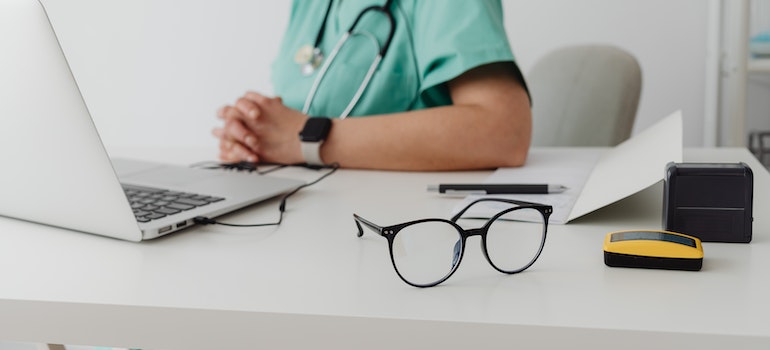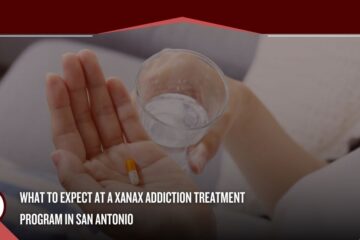As we navigate the complex waters of life, there often arises a crucial question: how do we improve our mental health and overall well-being, particularly when faced with the challenges of substance addiction? How do we tread the thin line between using and abusing certain substances? These questions are especially pertinent when considering the new global trend: microdosing. But what are the dangers of microdosing? Is it a groundbreaking solution for cognitive enhancement or a gateway to unforeseen risks and complications?
At the heart of these conversations is Alamo Behavioral Health, your trusted partner in understanding and dealing with mental health and substance use issues. At our Texas behavioral health center, we’re committed to providing you with the necessary knowledge and support, prioritizing your well-being. In the journey to uncover the effects and dangers of microdosing, we’ll be right beside you, lending a compassionate hand to guide you through.
Microdosing and its principles
Microdosing refers to the practice of consuming small amounts of psychoactive substances, typically 1/10th to 1/20th of a recreational dose. These substances often include psychedelics such as LSD (Lysergic Acid Diethylamide) and psilocybin mushrooms. The goal is not to undergo a full-blown psychedelic trip but to achieve subtle shifts in thought patterns, mood, and perception. However, the journey to such usage might sometimes start with more potent substances, requiring the support of the best drug detox program Texas offers to reach a clean state.
The reasons behind microdosing are diverse. Some seek enhanced creativity, cognition, or emotional well-being. Users report it assists them in thinking more creatively, concentrating better, and regulating their mood. Some view it as a self-care tool to manage symptoms of anxiety, depression, and PTSD – conditions familiar to many veterans. The use of substances like meth in higher doses is well-documented for its negative impacts on mental health. But could microdosing present a different narrative? Perhaps, but it might also lead you to the meth detox Texas program.

Common substances used in microdosing:
- LSD (Lysergic acid diethylamide)
- Psilocybin (Magic Mushrooms)
- Cannabis
- Ayahuasca
- DMT (Dimethyltryptamine)
Potential Benefits of Microdosing
As we venture further into microdosing, let’s shed light on its perceived benefits. These potential advantages, mostly drawn from anecdotal reports and preliminary studies, present a reason why this practice has gained traction.
Anecdotal benefits of microdosing include:
- Enhanced focus and creativity
- Mood enhancement
- Improved emotional well-being
- Reduced symptoms of depression and anxiety
- Increased self-awareness and introspection
Increased Focus and Creativity
In an age where distraction is a click away, the quest for enhanced focus and creativity is relentless. Anecdotal reports from microdosers indicate a noticeable boost in these areas. They often describe a heightened sense of clarity, sharper focus, and a blossoming of creative insights that seem just out of reach under normal circumstances.
From a scientific perspective, these substances might impact our brain’s function and perception, potentially explaining the observed effects. The belief is that microdosing enhances neuroplasticity, rendering the brain more adaptable. It’s also believed to impact the default mode network (DMN), the part of the brain responsible for self-referential thoughts, potentially enabling more fluid, out-of-the-box thinking.

Mood Enhancement and Emotional Well-being
Beyond the cognitive benefits, microdose individuals often report improvements in their overall mood and emotional well-being. It is reflected in narratives of increased optimism, emotional resilience, and a greater sense of connection and empathy toward others.
The potential role of microdosing in alleviating symptoms of mental health conditions like depression, anxiety, and PTSD is a topic of significant interest. The psychedelic compounds used in microdosing have shown promise in ‘resetting’ certain brain circuits, potentially relieving these conditions. However, it’s important to stress that these findings are still preliminary and require further, more rigorous research. Consulting a healthcare professional before starting any new regimen is crucial.
Reduced symptoms of depression and anxiety
The potential of microdosing to reduce symptoms of depression and anxiety is a fascinating area of interest. Some anecdotal reports suggest that regular microdosing can help alleviate the darkness of depression and the constant worry associated with anxiety disorders. Although this evidence is largely anecdotal and further research is needed, the implications for future mental health treatments are worth exploring.
Increased self-awareness and introspection
The reported increased self-awareness and introspection that come with microdosing are equally compelling. Users often describe a heightened sense of self-understanding, offering a window into their subconscious mind. This could provide an opportunity for self-growth and personal development, opening doors for greater emotional intelligence and a deeper understanding of one’s thoughts and feelings.
Lack of Scientific Evidence and Research Limitations
While the anecdotal reports about microdosing paint an enticing picture, it’s critical to remember that the scientific research on this practice remains limited. Most of our current understanding is based on self-reports and observational studies, which inherently have their limitations. For more definitive evidence, we require comprehensive, peer-reviewed research. This is particularly significant for individuals transitioning from more potent substances, like those who have engaged with Xanax detox Texas rehabs offer.
Performing controlled studies on microdosing is fraught with challenges, predominantly due to legal and ethical barriers. As per federal law, many substances employed in microdosing fall under Schedule I drugs, restricting their utilization in scientific studies. Ethical issues surrounding the administration of mind-altering substances also present significant obstacles. Individuals who have gone through Benzo detox Texas programs may be all too familiar with these complexities.

The urgency for more rigorous, long-term research to understand the effects and potential risks associated with microdosing is palpable. While initial findings and anecdotal accounts suggest possible benefits, the long-term safety of this practice remains largely unexplored. Like with any substance, understanding potential risks is vital to ensuring safety and promoting well-being. This is especially true for those who have successfully navigated fentanyl detox Texas programs and are seeking new avenues for mental health improvement. The journey toward comprehensive understanding continues.
Risks and Dangers of Microdosing
Even as we explore the potential benefits, examining the potential risks and dangers of microdosing is equally important. After all, every rose has its thorns.
Unpredictable Effects and Variable Dangers of Microdosing
Microdosing, like any other substance, comes with its fair share of unpredictability. Individuals’ physiological responses to substances can vary significantly, leading to diverse and sometimes unexpected effects. For instance, what boosts creativity for one might induce anxiety for another. These unpredictable effects could be particularly concerning for individuals who have already experienced the harrowing impacts of more potent substances, such as those who have undergone heroin detox Texas rehab centers offer.

Risk of Dependency and Substance Abuse
The risk of dependency and substance abuse is another crucial concern. Even with microdoses, regular use of psychoactive substances can lead to tolerance, requiring higher doses to achieve the same effect over time. It can open the door to abuse and dependency.
Legal and Ethical Considerations
Discussing microdosing without addressing the legal and ethical considerations is incomplete. Despite growing interest in the potential therapeutic benefits of psychedelics, many remain illegal in various jurisdictions. Using these substances, even in microdoses, could result in legal consequences. Therefore, for those struggling with substance use, seeking help from the most efficient opiate detox center Texas offers might be a safer and legally sound option.
Furthermore, we must consider the ethical implications of promoting substance use, particularly among vulnerable populations. It’s essential to advocate for responsible use and support in every step of the journey, from detox to recovery and beyond.
Individual Factors and Considerations
Before embarking on the microdosing journey, it’s crucial to consider individual factors. Every person’s body and mind react differently to psychoactive substances, even in microdoses.
The variables influencing these reactions are:
- metabolism
- body weight
- genetic predispositions
Understanding these individual differences and approaching microdosing with respect for your unique physiology and psychological makeup is essential.
A significant factor to consider is mental health history. If you have an account of psychiatric conditions such as schizophrenia, bipolar disorder, or severe depression, microdosing could potentially exacerbate these conditions. The same holds for personal vulnerabilities. For example, if you’re prone to anxiety, even a microdose of a psychedelic could amplify this. Therefore, we should not overlook medication interactions. Many psychoactive substances can interact with common medications, leading to harmful effects.
Professional guidance and supervision are key for individuals considering microdosing. Even though it’s a personal journey, having a healthcare provider to guide you can make the process safer and more effective. They can help you understand the potential risks and benefits, determine an appropriate dose, and provide monitoring to catch any adverse effects early. Whether transitioning from a period of substance misuse with the help of the best opioid detox center Texas has, or simply seeking to enhance your mental well-being, professional guidance can be a valuable resource on your microdosing journey.
Responsible Use and Harm Reduction Practices
Being well-informed about the substance, its potential effects and dangers, and the appropriate dosage is a prerequisite for safe and effective microdosing. One should understand what they’re putting into their bodies and prepare for the potential mental and physical reactions that may follow. Responsible use isn’t just a commitment to personal safety but also a stance against the stigmatization and misinformation that often surrounds the use of these substances.
Harm reduction strategies are an essential tool in the practice of microdosing:
- Accurate dosing: Ensuring you’re not consuming more than your body can handle.
- Adherence to safety guidelines: Not driving or operating heavy machinery under the influence.
- Regular self-monitoring: Journal your experiences and any side effects.
- Seeking professional guidance: Consult healthcare providers about potential risks and benefits.
- Utilizing support networks: Engaging with communities and resources for safe and responsible microdosing.
These harm reduction practices are your allies, guiding you towards a safer microdosing journey.
Educating the Public and Promoting Scientific Research
As the interest in microdosing grows, so should the effort to provide accurate and unbiased education about this practice. Many myths and misconceptions surround the use of psychoactive substances, often fueled by sensationalized media narratives and a lack of accessible, credible information. A comprehensive, unbiased education about microdosing can dispel these misconceptions, allowing individuals to make informed decisions about their use.
The need to promote scientific research on microdosing is paramount. While anecdotal evidence abounds regarding its potential benefits, rigorous scientific research is needed to separate fact from fiction. Understanding the potential benefits and dangers of microdosing is crucial to paint a comprehensive picture of its impact on mental health and well-being. By investing in research, we can uncover the truth about microdosing, moving it out of the realm of speculation and into the domain of evidence-based practice.

Healthcare professionals, policymakers, and the scientific community are crucial in shaping the public discourse on microdosing. Healthcare professionals are on the front, guiding patients interested in microdosing and advocating for safe practices. Policymakers have the power to influence the legality and accessibility of these substances, which in turn impacts research and public usage. Lastly, through their study, the scientific community provides the evidence needed to inform healthcare providers, policymakers, and individuals’ decisions. These key players must collaborate to guide the narrative on microdosing toward truth, understanding, and harm reduction.
Weighing the Effects and Dangers of Microdosing
Microdosing is a complex and nuanced practice with potential benefits and significant risks. It promises enhanced creativity, focus, and emotional well-being. Still, one must weigh these benefits against the potential dangers of microdosing, including unpredictable effects, the risk of dependency, and legal implications. We cannot overstate the importance of considering individual factors, using substances responsibly, and seeking professional guidance. As we continue to navigate this largely uncharted territory, education, scientific research, and collaboration among healthcare providers, policymakers, and the scientific community will be crucial. Remember, if you’re considering exploring microdosing, don’t hesitate to seek help and guidance from professionals at Alamo Behavioral Health. We understand the unique challenges and opportunities this practice presents.





